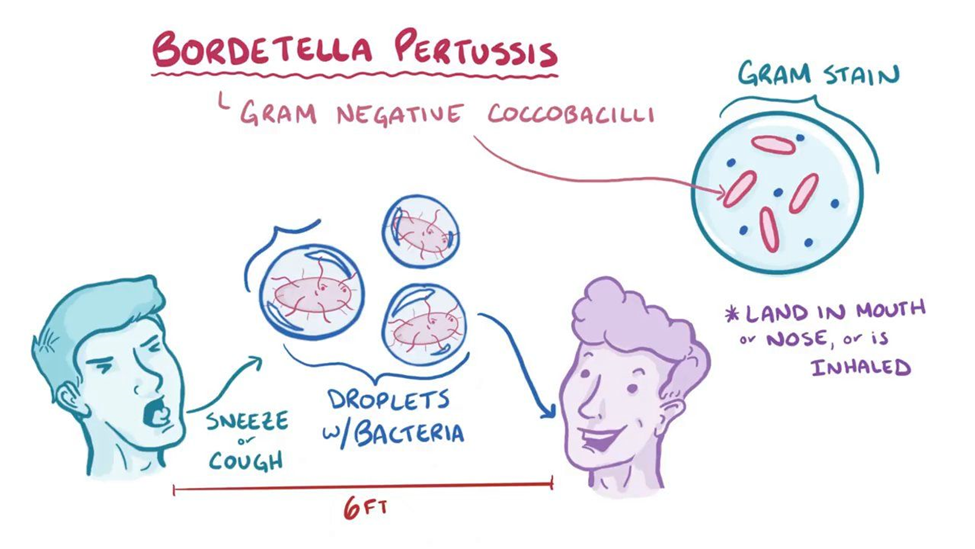A nurse on a pediatric unit is reviewing the laboratory results for a group of clients. Which of the following results should the nurse identify as the priority?
An adolescent who has iron-deficiency anemia and an Hgb level of 11 g/dL (10 to 15.5 g/dL)
A school-age child who has diabetes mellitus and an HbA1c of 8% (less than 7%)
A toddler who has moderate dehydration and an RBC count of 5.6/mm3 (4 to 5.5/mm3)
A preschooler who has cystic fibrosis-related diabetes and a WBC count of 15,000/mm3 (5,000 to 10,000/mm3)
The Correct Answer is D
A. An adolescent who has iron-deficiency anemia and an Hgb level of 11 g/dL (10 to 15.5 g/dL):
An Hgb level of 11 g/dL in an adolescent with iron-deficiency anemia is within the expected range for someone with this condition. While iron-deficiency anemia requires management, it is not an urgent or critical condition requiring immediate intervention.
B. A school-age child who has diabetes mellitus and an HbA1c of 8% (less than 7%):
An HbA1c level of 8% in a child with diabetes mellitus indicates poor glycemic control and may increase the risk of long-term complications. While it requires attention and adjustment of the treatment plan, it is not an urgent or critical condition requiring immediate intervention.
C. A toddler who has moderate dehydration and an RBC count of 5.6/mm3 (4 to 5.5/mm3):
Moderate dehydration in a toddler is a concerning finding that requires prompt intervention to restore fluid balance and prevent complications. However, the RBC count of 5.6/mm3 is within the normal range and does not indicate an urgent or critical condition.
D. A preschooler who has cystic fibrosis-related diabetes and a WBC count of 15,000/mm3 (5,000 to 10,000/mm3):
A WBC count of 15,000/mm3 in a preschooler with cystic fibrosis-related diabetes may indicate an infection or inflammatory process. Elevated WBC count warrants further assessment and possible intervention to identify and treat the underlying cause, making this the priority.
Nursing Test Bank
Naxlex Comprehensive Predictor Exams
Related Questions
Correct Answer is A
Explanation
A. Droplet:
Pertussis is primarily transmitted through respiratory droplets when an infected person coughs or sneezes. Droplet precautions involve placing the child in a private room or with another child with the same infection. Healthcare workers should wear a mask or respirator when entering the room to protect against droplet transmission.
B. Contact:
Contact precautions are used for infections that can be spread by direct or indirect contact with the patient or their environment. Pertussis is not typically spread through contact with contaminated surfaces or objects.
C. Airborne:
Airborne precautions are used for infections that are transmitted through small droplet nuclei that remain in the air for long periods. Pertussis is primarily transmitted through larger respiratory droplets rather than tiny airborne particles.
D. Protective environment:
Protective environment precautions are used for patients who have weakened immune systems, such as those undergoing bone marrow transplants. These precautions are not applicable for a child with pertussis.

Correct Answer is C
Explanation
A. "What is your pain level right now?": This response doesn't directly address the child's question about mortality and may deflect the conversation away from the child's concerns. While assessing pain is important, it should not be the immediate response to a question about mortality.
B. "Your doctor will be able to answer your questions tomorrow.": This response delays addressing the child's concerns and may leave the child feeling anxious or unsupported in the meantime. It's important for the nurse to provide immediate support and reassurance when a child expresses fears or worries.
C. "It sounds like you are worried. Tell me what you have been told.": This response acknowledges the child's emotions and invites them to share their thoughts and concerns. It opens up a dialogue between the nurse and the child, allowing the nurse to provide appropriate support and information based on the child's understanding and perspective.
D. "It's natural to worry about death, but you should focus your energy on getting better.": While this response acknowledges the child's worry, it may come across as dismissive or minimizing of the child's concerns about mortality. It's important to validate the child's emotions and offer support rather than redirecting their focus away from their worries.
Whether you are a student looking to ace your exams or a practicing nurse seeking to enhance your expertise , our nursing education contents will empower you with the confidence and competence to make a difference in the lives of patients and become a respected leader in the healthcare field.
Visit Naxlex, invest in your future and unlock endless possibilities with our unparalleled nursing education contents today
Report Wrong Answer on the Current Question
Do you disagree with the answer? If yes, what is your expected answer? Explain.
Kindly be descriptive with the issue you are facing.
